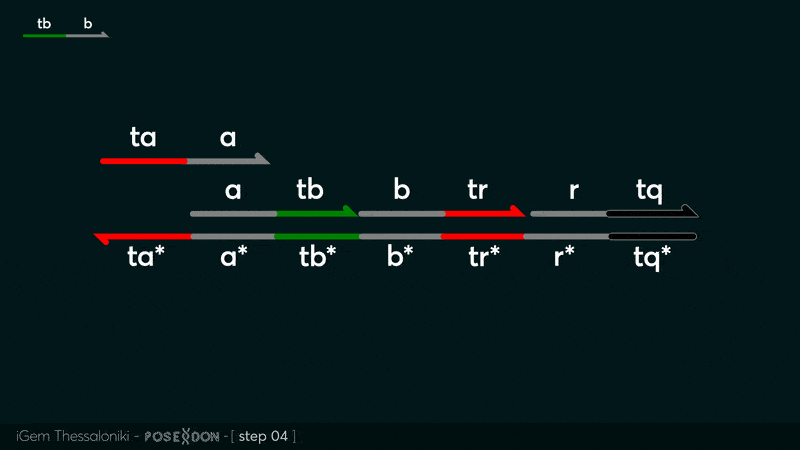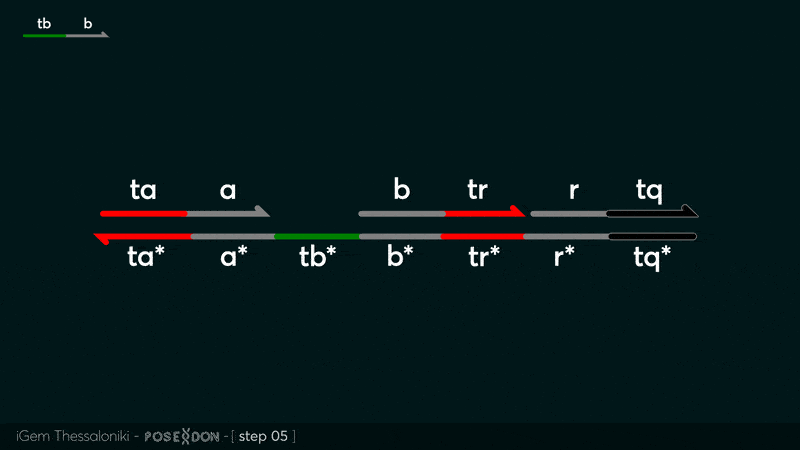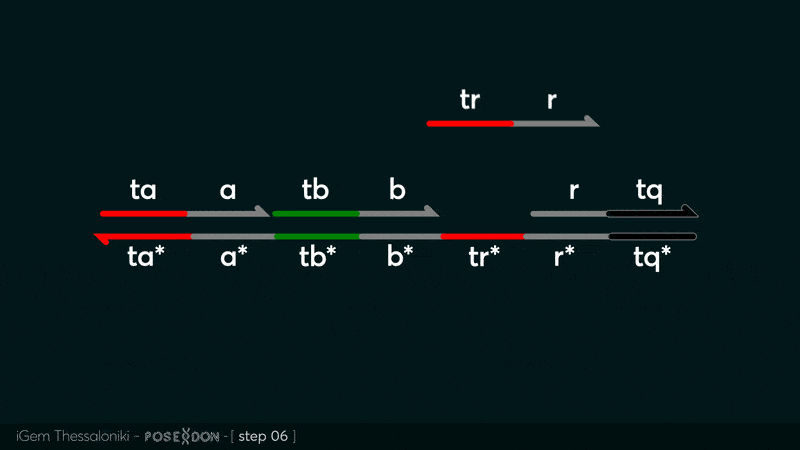Difference between revisions of "Part:BBa K3304001"
| Line 4: | Line 4: | ||
This is the Join Gate of our formal CRN. It receives 3 inputs in the form of TAA [[Part:BBa_K3304009]], TBB [[Part:BBa_K3304008]] & TRR [[Part:BBa_K3304010]]. In our iteration, TBB is produced by the amount of available upstream Input Gates [[Part:BBa_K3304000]] and the other inputs to the gate are introduced as auxiliary strands. In principle, both of them, however, could be introduced as orthogonal inputs, converting the Join Gate into a three-way logic AND gate. The gate, additionally, is the link that joins the Input Gate to the Fork Gate [[Part:BBa_K3304004]] that will eventually produce the output of the CRN as measurable light and will allow for the amplification to occur. This Join Gate is designed to be derived from plasmid DNA by implementing PvuII cut sites at the beginning and the end, as well as Nb.BsrDI nicking sites that will prepare the double-stranded DNA block to be used in Strand Displacement reactions. | This is the Join Gate of our formal CRN. It receives 3 inputs in the form of TAA [[Part:BBa_K3304009]], TBB [[Part:BBa_K3304008]] & TRR [[Part:BBa_K3304010]]. In our iteration, TBB is produced by the amount of available upstream Input Gates [[Part:BBa_K3304000]] and the other inputs to the gate are introduced as auxiliary strands. In principle, both of them, however, could be introduced as orthogonal inputs, converting the Join Gate into a three-way logic AND gate. The gate, additionally, is the link that joins the Input Gate to the Fork Gate [[Part:BBa_K3304004]] that will eventually produce the output of the CRN as measurable light and will allow for the amplification to occur. This Join Gate is designed to be derived from plasmid DNA by implementing PvuII cut sites at the beginning and the end, as well as Nb.BsrDI nicking sites that will prepare the double-stranded DNA block to be used in Strand Displacement reactions. | ||
| + | |||
| + | https://2019.igem.org/wiki/images/e/e1/T--Thessaloniki--animation-step4.gif | ||
| + | https://2019.igem.org/wiki/images/2/29/T--Thessaloniki--animation-step5.gif | ||
| + | https://2019.igem.org/wiki/images/1/1c/T--Thessaloniki--animation-step6.gif | ||
<!-- Add more about the biology of this part here | <!-- Add more about the biology of this part here | ||
Latest revision as of 21:49, 21 October 2019
Join Gate for the p65 specific CRN
This is the Join Gate of our formal CRN. It receives 3 inputs in the form of TAA Part:BBa_K3304009, TBB Part:BBa_K3304008 & TRR Part:BBa_K3304010. In our iteration, TBB is produced by the amount of available upstream Input Gates Part:BBa_K3304000 and the other inputs to the gate are introduced as auxiliary strands. In principle, both of them, however, could be introduced as orthogonal inputs, converting the Join Gate into a three-way logic AND gate. The gate, additionally, is the link that joins the Input Gate to the Fork Gate Part:BBa_K3304004 that will eventually produce the output of the CRN as measurable light and will allow for the amplification to occur. This Join Gate is designed to be derived from plasmid DNA by implementing PvuII cut sites at the beginning and the end, as well as Nb.BsrDI nicking sites that will prepare the double-stranded DNA block to be used in Strand Displacement reactions.



Sequence and Features
- 10COMPATIBLE WITH RFC[10]
- 12COMPATIBLE WITH RFC[12]
- 21COMPATIBLE WITH RFC[21]
- 23COMPATIBLE WITH RFC[23]
- 25COMPATIBLE WITH RFC[25]
- 1000COMPATIBLE WITH RFC[1000]
